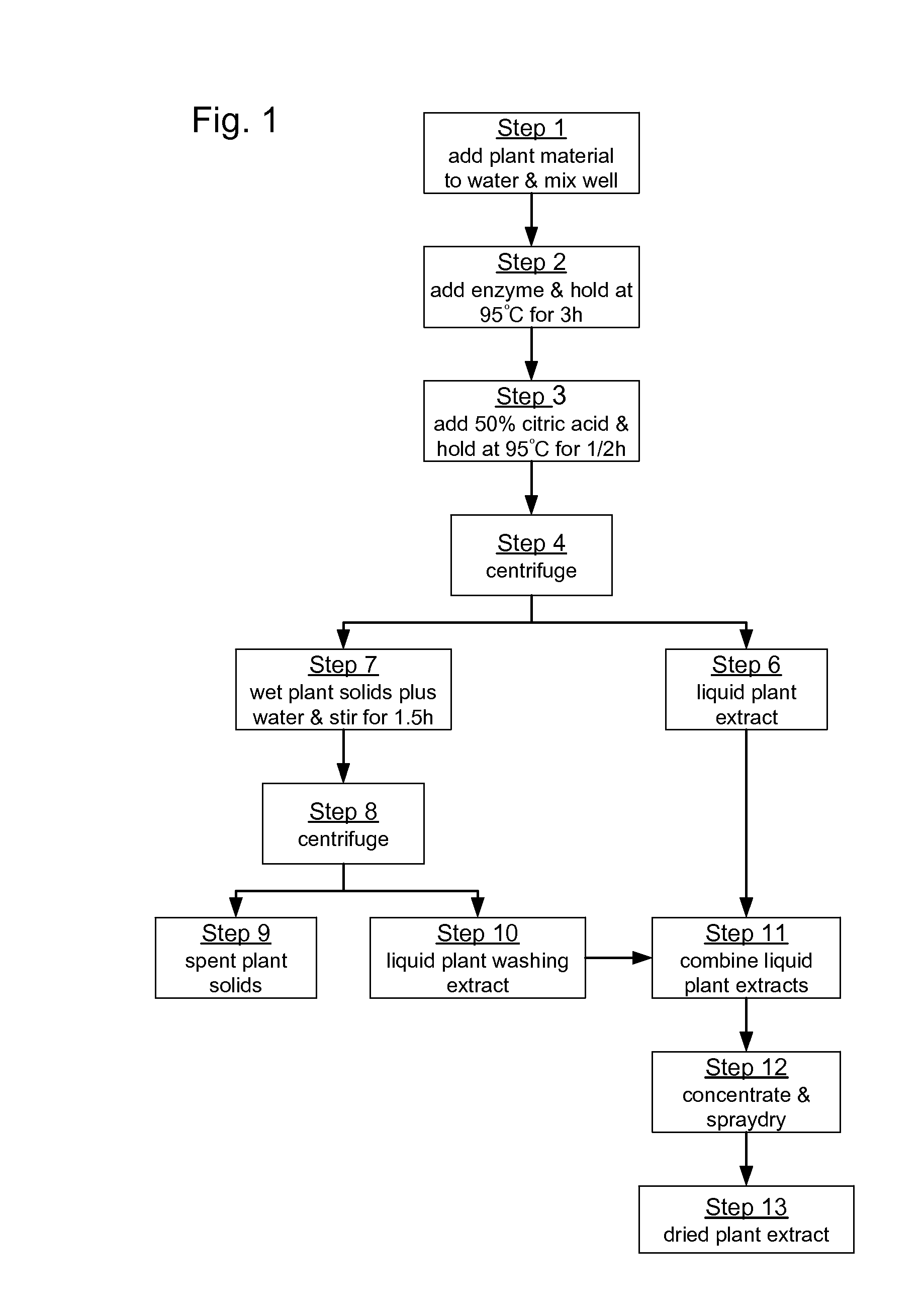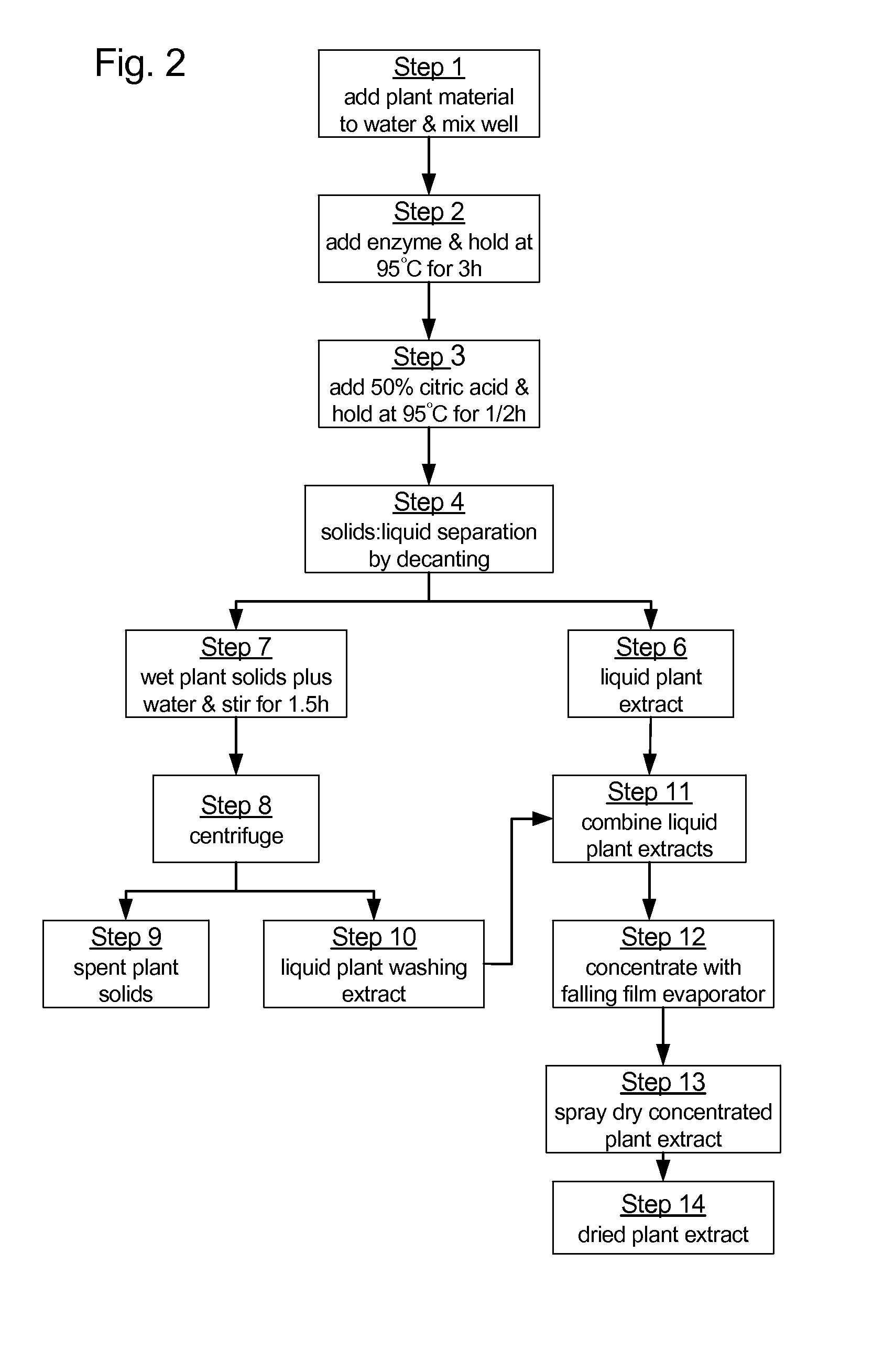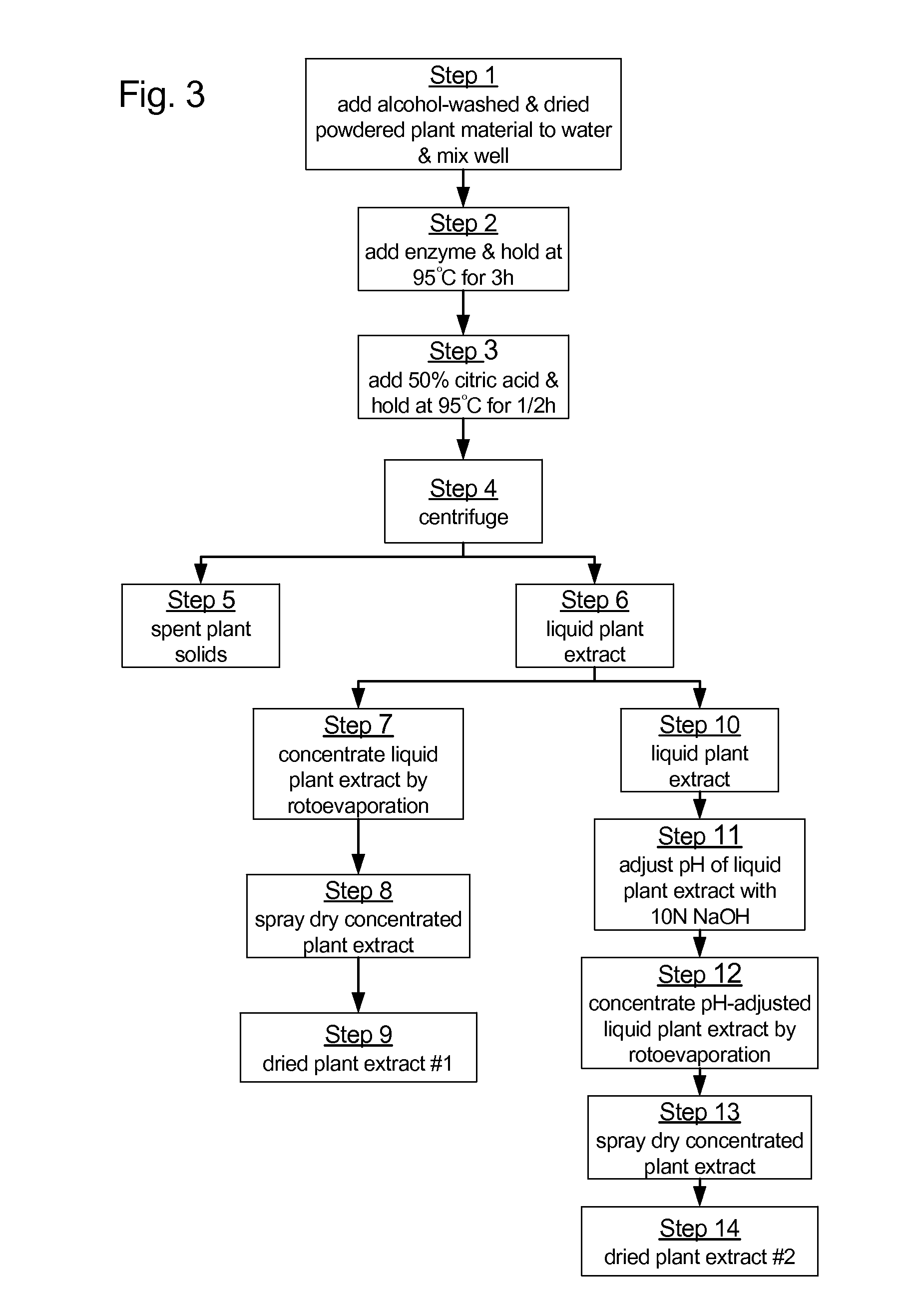Extraction of phytochemicals by enzymatic hydrolysis
a technology of enzymatic hydrolysis and phytochemicals, which is applied in the extraction of polysaccharides, oligosaccharides and saponins from plant materials, and the field of process, can solve the problems of low yield, complex chemical processes, and high cos
- Summary
- Abstract
- Description
- Claims
- Application Information
AI Technical Summary
Benefits of technology
Problems solved by technology
Method used
Image
Examples
example 1
[0026]A flow chart outlining one embodiment of the processes of the present invention is shown in FIG. 1 and exemplifies a two-step extraction of powdered ginseng roots at a laboratory scale. Dried North American ginseng root (P. quinquefolium) was supplied by Precise Hydroponics Inc., Edmonton, Alberta, Canada) and was milled into powder through a 24 mesh US screen. Approximately 300 g of the ground ginseng root were added to a mixing tank containing 3.6 kg of tap water under constant agitation (Step 1). The pH of the resulting slurry was determined to be 5.84. Approximately 1.5 g of α-amylase (e.g., Spezyme® Fred L supplied by Genencor International, Inc., Rochester, N.Y., U.S.A; Spezyme® is a registered trademark owned by Genencor International Inc.) was added to the ginseng slurry while constant agitation was maintained. The agitated slurry:enzyme mixture was heated to 95° C. and held at 95° C. for 3 hours to allow for the completion of starch hydrolysis (Step 2). The pH of the ...
example 2
[0032]The process described in Example 1 for testing in a laboratory scale was scaled to pilot-scale volumes as shown in FIG. 2. Dried North American ginseng root (P. quinquefolium) was obtained commercially and was milled into powder through a 24 mesh US screen.
[0033]Approximately 333.5 kg of ground ginseng roots were mixed with 4,669 kg of water under constant agitation in a 6,000 L stainless steel extraction tank. The ratio of water to the ground ginseng root was about 14 to 1 w / w. The ginseng slurry was heated to 97±2° C. under constant agitation, and its pH was determined to be 5.76. About 1.67 kg of α-amylase (Spezyme® Fred L supplied by Genencor International Inc.) was added to the slurry at a ratio of about 0.5% (enzyme:ginseng w / w). After addition of α-amylase enzyme, the ginseng slurry was heated to and held at 97° C.±2° C. for 3 hours under constant agitation to allow for sufficient time for starch hydrolysis. About 37.2 kg of citric acid were then added to the ginseng sl...
example 3
[0039]Two studies were conducted to assess the effects of incorporating an alcohol wash pretreatment of the starting powdered plant materials on the extraction of polysaccharides, oligosaccharides and saponins with the processes of the present invention. Approximately 1 kg of ground ginseng root (P. quinquefolium) with a moisture content of about 7.2%, was mixed with 8 liters of 85% (v / v) ethanol. The alcohol-ginseng slurry was heated to 73° C.±3° C. and held at about that temperature for 3 hours under constant agitation. The alcohol-ginseng slurry was then filtered under vacuum through Whatman#1 filter paper to separate the ethanol-soluble extract from the wet solids fraction. About 5.88 liters of ethanol extract (about 5.39% solids content) and 2.2 kg of wet solids (about 32% solids content) were collected. The ethanol extract was concentrated and dried under vacuum at 75° C. using a Rotavapor to produce about 0.26 kg of dried saponin extract. The wet solids fraction was dried in ...
PUM
| Property | Measurement | Unit |
|---|---|---|
| temperature | aaaaa | aaaaa |
| temperature | aaaaa | aaaaa |
| temperature | aaaaa | aaaaa |
Abstract
Description
Claims
Application Information
 Login to View More
Login to View More - R&D Engineer
- R&D Manager
- IP Professional
- Industry Leading Data Capabilities
- Powerful AI technology
- Patent DNA Extraction
Browse by: Latest US Patents, China's latest patents, Technical Efficacy Thesaurus, Application Domain, Technology Topic, Popular Technical Reports.
© 2024 PatSnap. All rights reserved.Legal|Privacy policy|Modern Slavery Act Transparency Statement|Sitemap|About US| Contact US: help@patsnap.com










